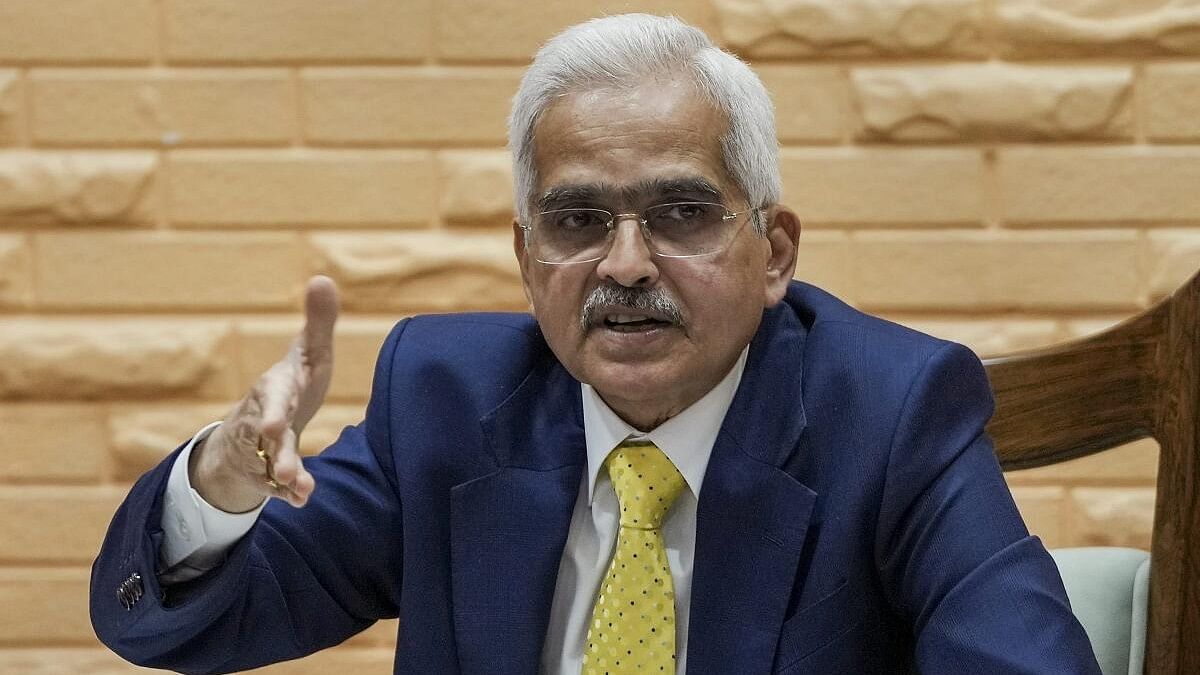
RBI Governor Shaktikanta Das
Credit: PTI Photo
The decision by the six-member Monetary Policy Committee (MPC) of the Reserve Bank of India (RBI) to maintain the repo rate at 6.5% was as expected. The repo rate, the rate at which the banks borrow from the RBI, has remained unchanged since February 2023.
The MPC maintained its ‘withdrawal of accommodative’ stance, expressing a ‘cautious optimism’ in its policy tone.
There was widespread anticipation for the MPC to change its stance to ‘accommodative’, which would have signalled that ‘rates peaked up’ maximum and reduction in repo rate is on the anvil.
Since the reduction in the repo rate is not on the horizon, at least until August/September 2024, any change in stance would have been counterproductive and send the wrong signals. The above policy decisions were decided by the MPC members with a 5–1 majority. These decisions imply that interest rates on various loans, including housing, builder, vehicle, personal, MSME, and corporate loans, will continue to be higher for a longer period of time.
Further, the MPC emphasises its commitment to monitoring the Consumer Price Index (CPI), including food and fuel inflation, to progressively align with the RBI/MPC mandated target of 4% on a sustainable basis and not to be complacent, being within the upper
cap of 6%.
The CPI inflation rose to 5.7% in December 2023 after moderating to 4.9% in October 2023. What is worrisome to the MPC is the ‘sporadic’ spike in food prices, especially that of cereals, pulses, eggs, meat, and meat products, which affects the inflation trajectory and consequently the growth. This, coupled with global uncertainties and headwinds with respect to international crude oil prices, other key commodities, and the disturbances in the Red Sea effecting price volatility in exports, will adversely impact and impinge on precious forex reserves.
The RBI Governor, Shaktikanta Das, was unhappy with the quantum and pace of transmission of the cumulative 250 bps repo rate hike, which has not yet been fully transmitted by the banks, FIs, and HFCs.
The process of transmission of the hike in interest rates on loans is ‘still underway’ as it operates with a ‘lag effect’. Competition among banks to garner loan market share delays a hike in the rate of loans, especially till the end of the financial year. However, interest rates on fixed deposits, especially for short durations of up to 1-3 years, have peaked to overcome the seasonal and frictional liquidity tightening in the money market.
The RBI is also infusing liquidity into the market as and when required through its variable repo and reverse repo auctions. The liquidity deficit of around Rs 3.5 lakh crore has been reduced to around Rs 1.25 lakh crore during February till date.
The RBI governor also announced a few ‘non-policy’ measures, notably the introduction of a ‘Key Fact Statement’ (KFS) for all retail and MSME loans and advances. This is a welcome and timely measure that ensures enhanced information and transparency in lending by banks, financial institutions, NBFCs, and HFCs and also enables borrowers to make informed decisions.
The new system warrants banks and other lenders to include in the loan sanction letter/term sheet not only the rate of interest (with details of quantum linked to the external benchmark rate, MCLR, fixed rate) of the loan sanctioned (all retail loans—housing, mortgage, vehicle, personal, and MSME loans and advances) but also to clearly specify the break-up details of all the fees and charges that are linked to the loan sanction, disbursement, and reset process.
Such fees and charges that will have to be included are processing, administrative, technical, legal, documentation, interest reset, CIBIL report extraction, property valuation, property insurance, LIP cover charges/premium, ‘credit rating’, property registration/MOE/mortgage release, recovery, penal interest on delayed payments, charges involved in the roll-over of credit limits to MSMEs, and prepayment and pre-closure charges.
In addition to providing the KFS to individual borrowers, all the ‘fixed or one-time payments’ that have specific fees or percentages of charges linked to the loan quantum should be annualised and highlighted as the all-inclusive annual percentage rate (APR) and not just the interest rate of the loan sanctioned. A copy of the ‘acceptance’ of the loan sanctioned letter, KFS, and APR signed by the borrowers should be preserved in the loan docket.
Since the charges/fees vary among banks / HFCs, the RBI may specify in its directions to the respective Board of Directors to approve the KFS and the APR formats, which may come into effect on April 1, 2024.
(The writer is a former banker)